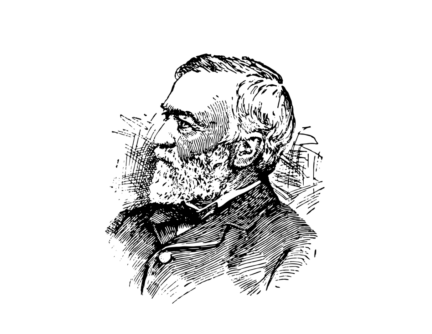Far better to have donors write lots of little checks rather than big ones that backfire.
When I wrote about the errors donors make in my book Great Philanthropic Mistakes, I looked at the ways donors latched on mistaken ideas even though there was little evidence to support these wrong-headed notions.
Mary Lasker, for example, was absolutely convinced that if the government spent enough money, a “cure for cancer” would be found. Her efforts, from the 1940s through the 1970s, helped transform the National Institutes of Health from a million-dollar enterprise into a multi-billion-dollar one. But her stubbornness caused her to acquire scores of enemies, including many of the scientists who benefitted from Lasker’s lobbying, who tried to tell her that science advances slowly and steadily, not by giant leaps, and that the idea of a “Manhattan Project to cure cancer” wouldn’t work because we don’t know enough about cancer to create miraculous cures.
Lasker’s efforts ended up inspiring the Nixon Administration’s War On Cancer. But the definitive analysis of that “war”, by Miami Herald reporter Frank Greve, showed that the $5.2 billion the federal government spent on the war on cancer between 1969 and 1975 did not reduce cancer rates. In fact, overall cancer rates rose slightly during that period because lung cancer rates rose dramatically.
I was reminded of the Lasker story when reading this piece from Financial Times columnist Tim Harford about the problems of technological forecasting. Rather than trying to predict big technological changes, he says, it’s important to know that “the most influential new technologies are humble and cheap.”
He begins by reminding us of Blade Runner, filmed in 1982 and set in 2019. In the future described in the film, the Tyrell Corporation has created robots so lifelike that they’re indistinguishable from humans. The hero wants to invite one of the female robots out for a drink—and uses a pay phone to do so.
The director and screenwriters of Blade Runner were so focused on their big idea (lifelike robots!) that they failed to see that phones wouldn’t change. Similarly, most of the corporations shown in the 1968 film 2001 no longer exist.
What matters more are small innovations that make large differences.
When Johannes Gutenberg invented printed books in the fifteenth century, his invention would have failed if paper hadn’t become commonplace. Parchment was a proven technology, but to get enough parchment for a book would have required the skins of 250 sheep. Paper made the production of books much cheaper, and ultimately led to all sorts of products, ranging from cereal boxes to filters for tea and coffee, that would never have existed if parchment remained the standard.
A second example Harford gives is barbed wire, patented by Joseph Glidden in 1874 and sold by John Warne Gates as “lighter than air, stronger than whiskey, cheaper than dust.” Barbed wire allowed the American West to be fenced off, which ensured that private property could be protected. The result was that the economy of the West thrived.
An example I’d give today is generic beta-blockers for blood pressure control. Today, they are very inexpensive, but if you read the accounts of people who lived a hundred years ago, you’ll find many stories of people who died in their mid-fifties from heart attacks who would have lived far longer had these simple medical advances existed earlier.
Large-scale philanthropy can make a real difference in science and medicine.
The Gates Foundation’s effort to produce better vaccines is a good example of a long-term project that is worthwhile. So, too, is the Howard W. Buffett Foundation’s effort to improve agriculture in the Third World.
But both the Gates and Buffett projects do not involve changing human behavior.
Far too often, however, we have arrogant philanthropists who say, “I have five billion dollars. Why can’t I end homelessness? Why can’t my money end hunger in America?” These philanthropists have found their enablers in Susan Wolf Ditkoff and Abe Grindle of Bridgespan, writing in the current Harvard Business Review.
Ditkoff and Grindle use all the clichés philanthropists love. Here is their conclusion:
“What remains constant is the need for shared and dynamic problem definition, clear and winnable milestones, solutions built for scale, robust investments to drive and serve demand, and adaptive capacity among philanthropists and grantees alike.”
I’d translate this into English, but after realizing that “robust investments to drive and serve demand” means, “Let’s throw lots of money at the problem,” I don’t really see the need for continuing.
They have lots of case studies, but they fail to show that foundations had much to do with them.
Yes, ending apartheid in South Africa was a multi-decade effort, but the activists who fought the white regime had more important things to do than file grant applications and wait for the decisions of program officers.
Similarly, it may well be that the Field Foundation issued reports in 1968 about school lunch programs, but the authors can’t show why low-priced school lunches continued long after the Field Foundation spent itself out[1].
Funders, Ditkoff and Grindle say, want “disruptive, catalytic, systemic change.” Of course they do. Who wouldn’t want to be remembered for ending homelessness, or stopping climate change?
The problem, of course, is that funders can’t really change the behavior of hundreds of thousands of people.
You can spend money ensuring that school cafeterias have enough fresh, locally grown greens to make Alice Waters or Michael Pollan ecstatic, but your money is wasted if kids won’t eat vegetables.
Your experts can come up with strategies that ensure that homeless people end up in affordable apartments, but that money won’t work if people, for reasons professionals can’t understand, prefer to sleep in the street.
Far better to have donors write lots of little checks rather than big ones that backfire. For every small grant a donor gives, they are likely to inspire someone to make an unexpected discovery that truly will change lives.
[1] They also say that one problem with school lunches today is “increasing adoption by children themselves,” which I think means “producing meals kids will actually eat.”






